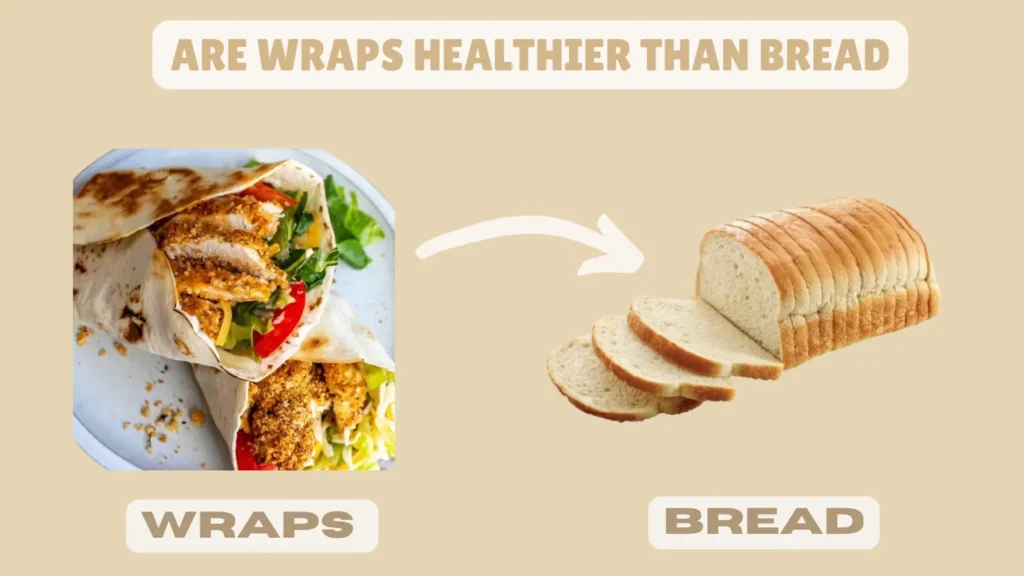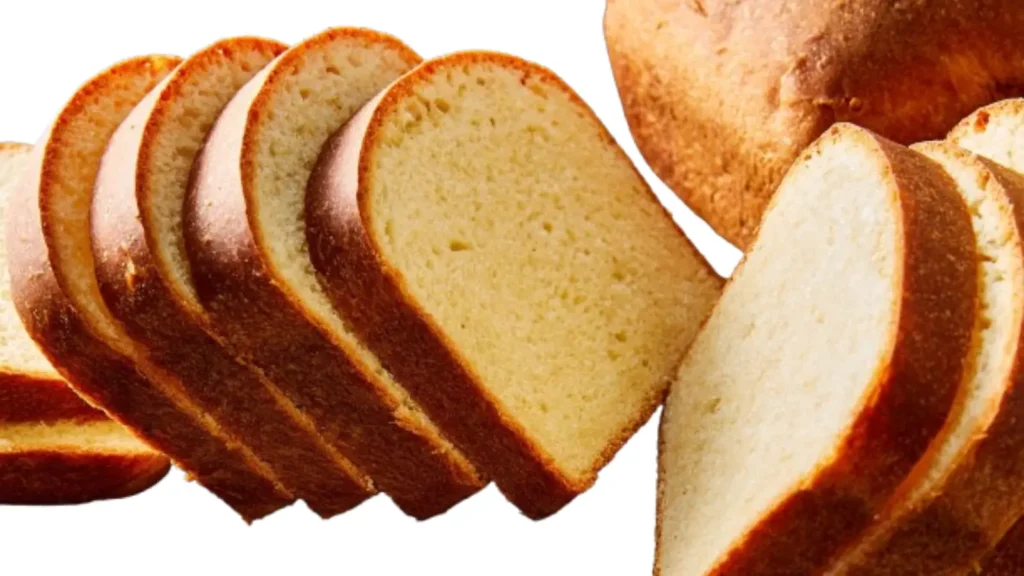Bread Vs Wraps – Are Wraps Healthier than Bread?
When it comes to healthy eating, wraps and bread are two common ingredients in our meals. But here raises a question: Are wraps healthier than bread, or which is actually the healthier option?

In this article, we’ll look at the nutritional differences, their advantages and disadvantages , and how to make the best decisions about your diet.
What are Wraps?
A wrap is a meal that is often made by rolling flatbreads such as pita, dough, or tortillas with food inside. They are becoming increasingly popular as a convenient and customizable dinner choice, especially for those on a tight schedule. The most common types of wraps include:

- Whole Wheat Wraps: These wraps, which are made with whole grain flour, are higher in fiber and nutrients than those made with white flour.
- Spinach or Tomato Wraps: These wraps, which are frequently colored with vegetable blends, might have some nutrients, but you should always check the amount of nutrients they contain.
- Low-Carb or High-Protein Wraps: These are common among people on specific diets, such as the ketogenic diet, which typically have higher protein content and lower carbs.
Wraps are a useful alternative for a range of dietary preferences since they may be filled with a variety of foods, such as hummus, spreads, lean meats, and veggies.
What is Bread?
Bread is an everyday meal produced from wheat and water that is baked, generally cooked, and consumed in a variety of ways all over the world. There are several varieties of bread, such as:

- Whole Grain Bread: It is made of whole grains, it has more fiber and minerals because the bran and germ are retained.
- White Bread: It is made of refined flour and is deficient in many of the nutrients present in whole grains.
- Sourdough Bread: Dough that has been fermented; it tastes good and is usually easier to digest.
- Gluten-Free Bread: Made using alternative flours, suitable for people with celiac disorder or gluten sensitivity.
For thousands of years, bread has been an essential component of human meals, often serving as a foundation for different toppings and fillings.
Comparison of Nutrition – Wraps Vs Bread
While selecting which one is healthier, it’s important to know about the nutritional information of wraps and bread.
Calories and Macronutrients
When compare wraps and bread, it’s important to consider the caloric amount and macronutrient composition:
Fiber Content
Fiber is essential for both weight loss and digestive health.
Choosing whole grain options for bread and wraps increases the amount of fiber consumed, which is essential for keeping your digestive system healthy.
Ingredients Analysis — Wraps Vs Bread
Types of Wraps
When selecting wraps, consider their ingredients:
Types of Bread
Bread can vary widely in terms of ingredients:
Advantages and Disadvantages — Wraps Vs Bread
Wraps
Following are the advantages and disadvantages of wraps:
| Advantages | Disadvantages |
| Lower in calories when combined with vegetables and lean meats. | May be high in sodium. |
| Helps you control your food intake. | Refined flour wraps may be deficient in nutrients. |
Bread
Following are the advantages and disadvantages of bread:
| Advantages | Disadvantages |
| Rich in vitamins, minerals, and fiber. | Diabetes and obesity can be linked to refined bread. |
| Enhances digestion and cardiac wellness. | Those who are sensitive to gluten should proceed with caution. |
| Fits into a diet that is balanced and uses entire foods. |
When to Choose Wraps or Bread
Choosing the best option relies on the meals and dietary requirements of each individual.
Dietary Needs
Meal Type
Bread can be appropriate for more nutritious meals like toasts or sandwiches, while wraps are great for quick lunches or casual dinners.
Preferences for taste and texture are important factors in your decision. Wraps may not suit those who prefer chewy textures, while bread may be closer to their liking.
Which one is healthier – Wraps Vs Bread
Many times, the argument about which is healthier—bread or wraps—comes down to a few essential elements. Whereas a slice of whole grain bread contains around 80–100 calories, a wrap usually has between 150 and 200 calories.
In terms of carbs, wraps often provide 30–40 grams, whereas whole grain bread only provides 15-20 grams. If you choose with the whole grain selections, each provides around 3-5 grams of fiber.
Comparable amounts of protein—between three and five grams per serving—are found in both. The quality of the ingredients also counts; whole wheat and sourdough breads are better than white bread, and whole grain wraps or corn tortillas are healthier options.
Wraps are a flexible lunch choice that may help with meal management and offer a broad variety of customizable fillings.
On the other hand, bread is often higher in calories and contains important nutrients. In the end, bread and wraps can both be a component of a healthy diet—especially when made with whole grains. Your selection should be based on your own nutritional requirements and preferences.
FAQs
Conclusion
When chosen wisely, both wraps and bread may be healthy solutions. Whole-grain wraps and bread are often chosen over refined grains because they include more fiber and can benefit digestive health and blood sugar management.
However, personal tastes and dietary requirements should also be taken into consideration. You may enjoy wraps and bread without compromising your health by making wise decisions and including a variety of foods into your diet.
